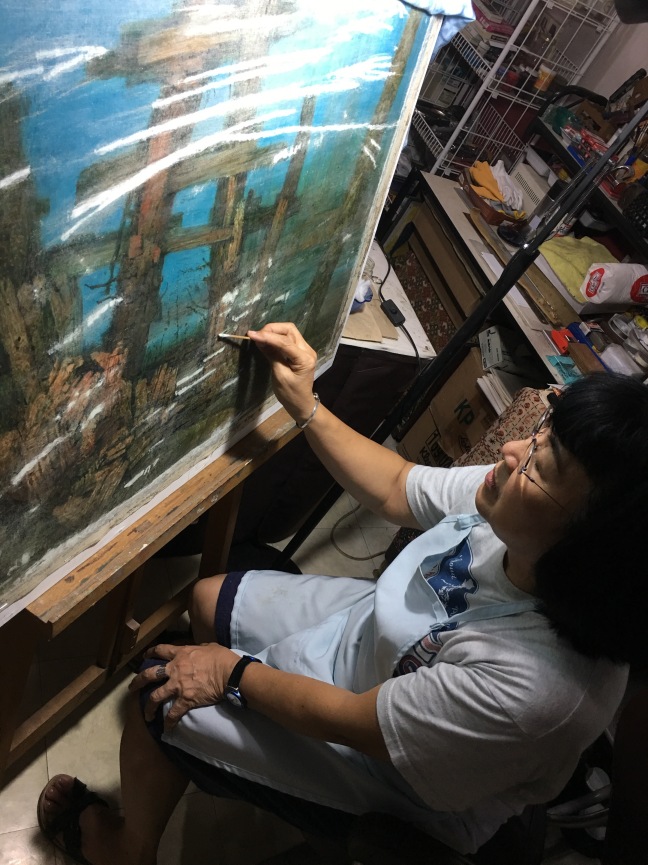
Penman for Monday, October 23, 2017
AS YOU read this, I’ll be in Bali, Indonesia, attending this year’s Asia Pacific Writers and Translators (APWT) conference, about which you’ll hear more next week. But today I’m going to throw in a few more terms aside from APWT into our literary alphabet soup, so you’ll know a bit more about what our writers are doing.
APWT, of course, is the region’s primary and most active network of writers and translators. While many of its members are also teachers, APWT is refreshingly non-academic, meaning you can actually understand what people are saying at its conferences, which are devoted to practical issues and questions of craft. You can find out more about the organization here (apwt.org) and maybe even think of signing up so you can attend next year’s meeting in Brisbane.
If you’re just starting out as a writer and feel like you’re still a long way away from APWT, perhaps you should try out for the next ALBWW, which is the Amelia Lapeña Bonifacio Writers Workshop. Now on its second year, the ALBWW was initiated by the University of the Philippines Institute of Creative Writing (UPICW) to help and encourage young, beginning writers.
UP, of course, had been supporting novices since the workshop itself began in 1965, but since its main summer workshop shifted toward mid-career writers in the 2000s, beginners have had to choose from a roster of workshops offered by other schools. The ALBBWW—named after the country’s foremost exponent of children’s theater—is UP’s way of saying “We haven’t forgotten you.”
Devoted to young adult writing, this year’s ALBWW was held from October 6 to 9 at the Oracle Hotel on Katipunan Avenue, and brought in 12 of the country’s youngest and brightest writers. They included Ivan Khenard Acero, Angeliza T. Arceño, Gabriel Carlos T. Cribe, Sigrid Gayangos, Ivan Emil Labayne, Kid Orit, Steno Padilla, Rayjinar Salcedo, Rai Aldrin B. Salvador, Krizelle R. Talladen, Carlos Valdes, and Sofia Zemana. They came from as far north as Isabela and Baguio to as far south as Butuan and Zamboanga, with backgrounds as diverse as Math, public relations, illustration, and book design, aside of course from literature and creative writing. Veteran writers Dean Alfar, Eugene Evasco, Mina Esguerra, Vim Nadera, and Christine Bellen walked the fellows through discussions of their works and of aspects of the craft.
A highlight of the ALBWW was a group visit with Ma’am Amel at her home, which also happens to be the headquarters of Teatrong Mulat, her pioneering children’s theater group which performed excerpts of their puppet plays for the visitors. The fellows were also treated to a tour of the Ateneo campus and the Rizal Library.

Another important ICW event last month was the third iteration of the IBF or Interdisciplinary Book Forum, an activity co-sponsored by the UCW and the UP Press. I conceived of the IBF a couple of years ago when I was still ICW Director, thinking how interesting it would be if a new book—in any field, not just literature—were to be read and discussed by a panel of experts from a broad range of disciplines. How would a book on colonial architecture be read by, say, a sociologist, a historian, and a civil engineer? How would a novel on OFWs be received by a labor economist, a diplomat, and a psychologist?
We began this new IBF series last year with discussions around books on tattooing in the northern highlands on new speculative fiction written by Filipinos. For our third book, we chose Dr. Ma. Mercedes Planta’s Traditional Medicine in the Colonial Philippines: 16th to the 19th Century—a book recommended by UP Press Director Neil Garcia not because it was intrinsically interesting but because it also connected us to what its author, a historian, calls “our usable past.” Valuable insights into that past and our appreciation of it were contributed by the archeologist Dr. Victor Paz, the historian Dr. Ma. Luisa Camagay, and the physician Dr. Salvador Caoili. You can find the videos of this and other ICW events at http://panitikan.com.ph/media/.
Last, there’s KSA—Kutura, Sining, Atbp.—a cultural talk show that I host on TVUP along with Drs. Neil Garcia and Cecilia de la Paz. TVUP (tvup.ph) was started last year as UP’s Internet TV station, creating and broadcasting new programs—on significant and important topics, but presented in a popular and accessible manner (one of my favorites titles is “Hairy Balls and Donuts: The Fascinating World of Geometry” by Dr. Joey Balmaceda, a mathematician). On our show—which is bilingual, by the way—we’ve done episodes on film, theater, creative writing, and visual arts, among others, and are looking forward to taping further episodes on architecture, music, and dance, once we get the right mix of guests together.
There’s a few more acronyms for authors I can think of—we’ll soon be looking for our next NSWW fellows (that’s the National Summer Writers Workshop), the big mid-career gig that we’re hoping to be able to move to other UP campuses around the country, possibly in the Visayas next after two years in Los Baños—but you get the idea. In this life of letters, we try to make every word count.











